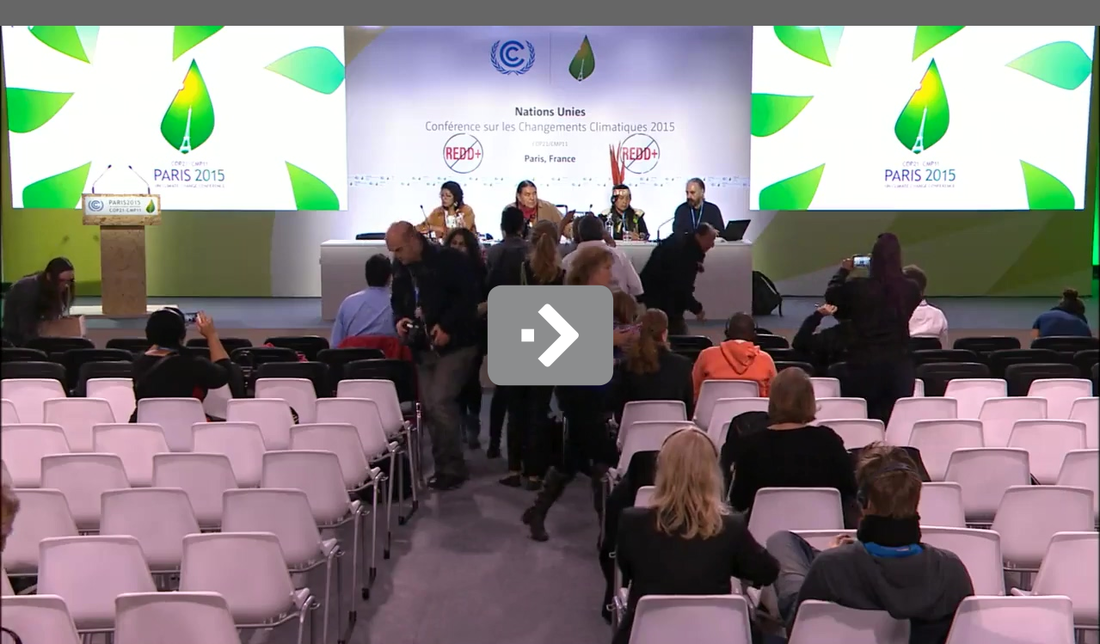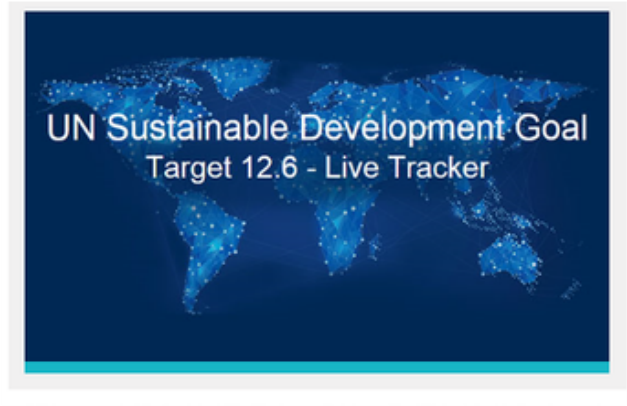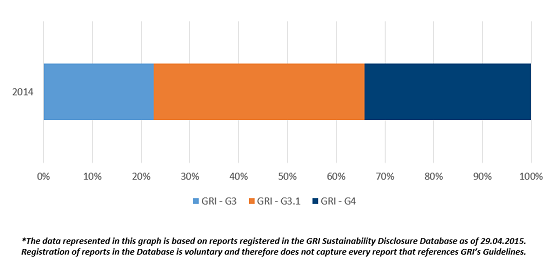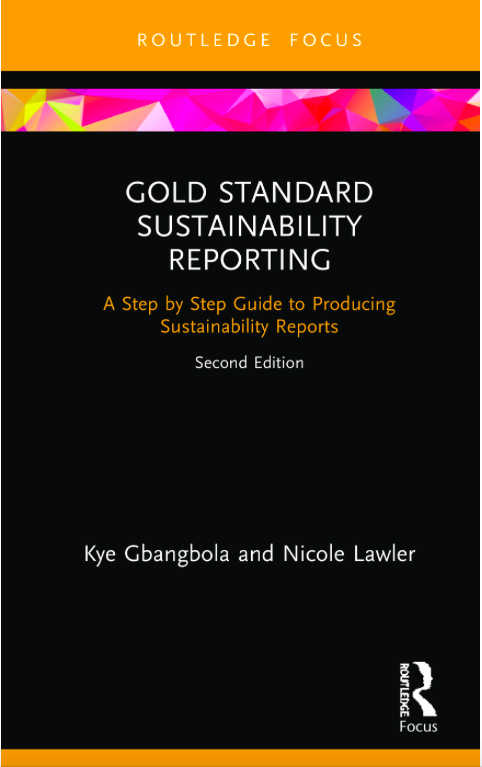|
GRI has just unveiled plans to expand its scope to catalyze the next era of #sustyreporting! These plans include a focus on four strategic priorities as well as a new brand to support this strategy. GRI already provides the world’s most trusted and widely used #sustainability reporting standards, used by thousands of organizations in over 90 countries. Building on this legacy, GRI will expand its focus over the next five years to empower #decisionmaking towards a more sustainable economy and world http://bit.ly/1MiblBR
0 Comments
The G4 Exam was launched in February 2015 and allows sustainability professionals to demonstrate their knowledge of the G4 Guidelines and the GRI Reporting Process, enhancing their credibility and reputation in the sustainability field. The GRI G4 Exam tests candidates on their knowledge of the content of the G4 Guidelines, as well as the five phases of the GRI Reporting process.
The Exam is implemented in collaboration with Prometric, and candidates can take the Exam in over 500 test centers located in 82 countries. Since the launch of the G4 Exam in February 2015, 123 participants from 36 different countries worldwide have taken the G4 Exam. 89% of the candidates have passed the exam with an average score of 85% of correct answers, where the minimum score to pass is 75%. We are delighted to see that our UK training have produced the highest number of successful candidates. If you would be interested in sitting the G4 exam please contact info@temltd.co.uk The concept of developing meaningful, effective and engaging sustainability reports has started to weigh anchor in the business sphere, evolving from a swept-aside entrée to the meaty bulk of fundamental corporate social responsibility.
For Kye Gbangbola, founder of Total Eco Management – an award-winning sustainability training service – companies venturing into the realm of sustainability reporting are driven by three overlapping motives: legislation demanding it, visionary leaders implementing it, or a near miss with climate or CSR-related disaster.
Kye specialises in supporting and advising the private and other sectors with their sustainability and reporting responsibilities. He is the author of ‘How to Produce a Sustainability Report', published by DoShort. Kye has watched as the private sector landscape has shifted sustainability reporting and CSR from a ‘would like to do’ to a ‘must do’. But arriving at the foot of what can be a mountainous task can be daunting for starters. With that in mind, here are Kye Gbangbola’s 10 top tips for writing a succesful sustainability report. 1) Know your angle before you get started Kye is a firm believer that companies lend themselves to sustainability reports for a variety of reasons. While these reasons can overlap, once you've gained an understanding of why you need to publish this report, you can begin to tailor your company's actions for the desired effect. "In the past, when you looked at a business, 80% of its dealings were to do with finances and those were the ways that investors acted around each other," Kye says. "But with increased legislation and then need to tailor companies so they can exist in the future, investors expect people to a have a greater knowledge of wider values. "No matter what angle you approach this at, sustainability reporting is a must do, otherwise you no longer have a credible proposition for your products and services." If a company is recovering from a climate-related mishap, for example, then a sustainability report could be the perfect catalyst for a phoenix-from-the-ashes redemption. Tailoring to the report to certain legislation also gives the company credibility in the stocks, while adopting reporting as a mantra gives your company a new moral compass. 2) Understand your company's (and stakeholder's) needs Kye notes that those creating a report simply because legislation demands it can often get caught in the crosshair of why they are even writing it in the first place. And this can create confusion about th development, structure and key themes of the report. Having an understanding of where a company fits in with society and the environment makes it a lot easier to see the bottom-line benefits, Kye says. “Some organisations understand that there is no conflict between profit and responding better to society,” Kye says. “In some industries the fact they respond better to society means they increase their profit margin and their spending goes down while response to products go up.” In a morally-conscious world more people – especially millennials – want companies to reflect their beliefs, with sustainability at the heart of these beliefs. 3) Get ahead of the game We’re all familiar with downfall of the hare and the fable that ‘slow and steady wins the race’, but when it comes to sustainability reporting, Kye believes that getting started early can have huge benefits for companies. “If a company can show that they are taking sustainability into account – especially when others in their sector aren’t showing that much interest – it can paint you in a pretty positive light,” Kye says. “It gives you a chance to become an industry leader and gives you trust, high credibility and good leadership qualities among innovative forward thinkers.” While companies obviously need to have the ground work ready, getting ahead of the sector and standing out from the crowd will draw stakeholders and consumers to you. 4) Navigate the reporting landscape Sustainability reports come fitted with guidelines that need to be followed in order to cover the necessities. Kye is a certified 'GRI G4' trainer - one of the most popular framework guidelines. Over the years, he has seen too many companies get trapped in the guidelines webs, "trying to tell the story they think others want to hear, rather than the story they have". “Reporting is an absolutely living opportunity to enhance its strategic objects, but too many let the guidelines dictate what they end up reporting. The guidelines should complement the story but never drive it.” By viewing your report as a journey rather than an actual report, Kye feels that it becomes much easier to create a structure that highlights what the company has done and is doing, and streamlines the reporting process. 5) Be honest As mentioned earlier, companies can be driven to sustainability reporting as a result of a disaster or mistake. While some will want to brush these incidents under the rug, Kye believes that displaying what has happened in an honest fashion actually increases the credibility of the report. “Some companies may not be hitting the targets they should be hitting. Report writing is about balance, it’s an essential principle. It’s about saying the good and the bad, because it gives the report credibility. “You can paint a message in many ways but what you do want to do is paint it in an honest fashion. To a person the reports that they trust are ones from organisations that are telling the good along with the bad. It’s important to never run away from the situations that you find yourself in.” Missed targets or bad press will end up in the public one way or another, but a sustainability report gives companies the chance to turn disappointment into opportunities. 6) Set realistic goals You wouldn’t run a marathon before you can walk, or try bay parking before you’ve mastered the clutch. So companies going into these reports shouldn’t do so believing they alone can rid the world of climate change. “We encourage organisations to set smart, realistic and achievable targets otherwise they can come back to haunt you," says Kye. "This is a public document and if you continue to fail on your targets then it won’t look good. You’ll just end up driving your company into a wall.” The targets in reports need the right blend of ambition and achievability. Not only does his drive companies towards sustainable goals, it also creates extra emotional drivers that can add strength to a report. 7) Fail to prepare, prepare to fail While getting ahead of chasing pack can be key in business, doing so without a complete understanding of where you’re actually heading can turn a sustainability report into a time-consuming vacuum. Kye says: “Understand what the journey will entail so that you don’t end up being in a situation where you’ve over packed. Just bring what you need for this journey otherwise it will bring you to your knees. “If you prepare well it saves you a huge step of what’s called unintended consequences. The journey will be quicker and smoother; there are just too many pitfalls to fall down.” As for all means in life, if you fail to prepare for this report, then you can prepare for the report to fail. 8) Get the board on-board Kye notes that a lot of companies still view sustainability reports as publications that can be worked on in small teams in the background. While it may be possible for a few members of staff to produce a report, getting backing and interest from board members and stakeholders on key sustainability issues can make the entire reporting process much more streamlined. “Engaging with internal stakeholders is the best way to prioritise what should be reported. Without them the report becomes a heavy burden and can place undue pressure on the reporting team,” Kye says. “Having investment and interest from the top means that you don’t have to galvanise resources to create a better report because the board members will have a better idea on what the business reflects as a whole.” It's no surprise that companies with visionary leaders such as Unilever constantly deliver in regards to reporting - all the strings are pulled by people who truly believe in what they are preaching. 9) Keep your initial expectations relatively low Similar to having realistic targets in place, it is also important to have a realistic idea of what the end result of your sustainability report will be. “You have to give reporting your respect; just like any discipline you get better with time," says Kye. "Just getting across the finish line is an achievement the first time round, and by the third year reporting will be embedded as part of a company’s DNA and will become a natural way of thinking.” By understanding that the report will take time and may not reflect on where your company wants to be right now, those building the report won't become disillusioned with the process. 10) Don’t go in blind, and enjoy the journey! Kye has built his carrier around helping others with their reports, so it’s only natural that seeking guidance would be a key piece of advice. “Imagine going to a foreign place, its handy to have a guide,” he says. “There are people out there who know about the reporting sphere who can ask the questions that may not be necessarily clear to ask to enhance the report. "If you can get the guidance and support it will save a lot of hassle and make the journey far more enjoyable.” edie Sustainability Reporting Concerence 2015 The fifth annual edie Sustainability Reporting Conference takes place on 23 February 2016 at the Inmarsat Conference Centre in London. At the event, Kye Gbangbola will lead a session dedicated to 'Sustainability reporting guidelines – learning from the best'. Find out more about the conference and register to attend here. Read the first part of this series here. original article written by Matt Mace Walk the talk, you are what you do, not what you say - watch this Indigenous Environmental Network at COP21
GRI has upgraded its Sustainability Disclosure Database. The UN Sustainable Development Goal Target 12.6 – Live Tracker, provides information that governments and other corporate stakeholders can use to understand how the uptake of sustainability reporting is progressing around the world. The Target 12.6 – Live Tracker can be found now on GRI’s Sustainability Disclosure Database. Page Content UN Sustainable Development Goal (SDG) Target 12.6 lays out a global ambition for governments to develop initiatives that stimulate businesses to report on their sustainability impacts. Specifically, Target 12.6 calls upon UN Members States to “encourage companies, especially large and transnational companies, to adopt sustainable practices and to integrate sustainability information into their reporting cycle.” As a result, over the next 15 years, the UN and all UN Member States are tasked with not only cultivating a business climate in which more companies report on their contributions to the SDGs, but they should also monitor and track these efforts. GRI developed the SDG Target 12.6 – Live Tracker, in collaboration with Tata Consultancy Services, to assist governments in monitoring and tracking progress. Tata Consultancy Services (TCS), one of the leading Global IT Services companies, is at the forefront of developing technology solutions that enhance effectiveness of sustainability interventions, and improve Monitoring and Evaluation, thereby enabling better decision making.
“By explicitly acknowledging the critical role companies must play in creating the conditions for sustainable development, the SDGs are an important leap forward from the Millennium Development Goals, which they now succeed,” said GRI’s Deputy Chief Executive Teresa Fogelberg. “In order for governments to develop initiatives to increase sustainability reporting, they first need to understand the current state of play within their respective jurisdictions. The SDG Target 12.6 - Live Tracker will provide an overview of sustainability policies and reporting practices by companies around the world. This will enable smart policy and drive the innovation needed to achieve the SDGs.” GRI supports decision makers who are committed to achieving the SDGs. GRI’s work in this area is focused on the sustainability reporting process, the value of the information that comes from it and getting this data into the right hands. By helping companies report their contributions to the SDGs, GRI facilitates the creation of data, which governments can use to track progress toward the SDGs and inform better decision making. Read the original article >>>> THE CLEAN POWER PLAN The Clean Power Plan sets achievable standards to reduce carbon dioxide emissions by 32 percent from 2005 levels by 2030. By setting these goals and enabling states to create tailored plans to meet them, the Plan will: PROTECT THE HEALTH OF AMERICAN FAMILIES. IN 2030, IT WILL:
BOOST OUR ECONOMY BY:
SAVE THE AVERAGE AMERICAN FAMILY:
President Obama Announces the Clean Power Plan GRI unveils first-ever professional exam to test knowledge of the G4 Guidelines and the GRI Reporting process.
On February 2, 2015, Amsterdam GRI, architect of the world’s most widely used sustainability reporting framework, unveiled the GRI G4 Exam, a first-of-its-kind opportunity for sustainability professionals to demonstrate their knowledge of G4 and the GRI Reporting Process. Individuals who have attended one of GRI’s Certified Training Courses or Training Modules are now eligible to take the G4 Exam for a fee. Trainees who earn a passing score on the exam will receive a certificate to that effect and their names will be listed on the GRI website. In this way, these practitioners can increase their credibility and good reputation in the sustainability field. Of GRI’s decision to develop the G4 Exam, Chief Executive Michael Meehan said, “With more than 17,000 GRI reports registered in our database and more than 19,000 professionals having attended a GRI Certified Training Course, the practice of sustainability reporting is poised to take a quantum leap, as organizations begin using the reporting process for strategic decision-making, to innovate and create value for their stakeholders. The G4 Exam will help stimulate this next step in sustainable development by increasing the number of highly skilled professionals working in the field.” The GRI G4 Exam tests candidates on their knowledge of the content of the G4 Guidelines, as well as the 5 phases of the GRI Reporting process: Prepare, Connect, Define, Monitor and Report. The exam consists of 60 multiple choice questions and test takers will be given 90 minutes to complete them. Candidates, who score at least 75%, will receive a passing mark. The exam can be taken at 4,500 test centers in 70 countries and individuals only become eligible to do so after attending a training course or module given by one of GRI’s Certified Training Partners. Candidates in developing countries can take this exam for a reduced fee and members of GRI’s OS Program are also eligible for a discount. “Since 2008, thousands of sustainability professionals have attended one of the high-quality courses provided by our Certified Training Partners,” said GRI’s Director of Services Asthildur Hjaltadottir. “The GRI G4 Exam is the logical next step, giving trainees a chance to show their thorough understanding of our framework.” For more information please visit the GRI website or email us. The value of Integrated Reporting is now widely acknowledged in the market, according to a new white paper, 'Allocating Capital for Long-Term Returns' released by the Generation Foundation in May 2015.
The paper evaluates the progress made towards the recommendations set out in their initial white paper, 'Sustainable Capitalism' released back in 2012. Their conclusion is that the new model of capitalism they proposed, which included Integrated Reporting, "has gained significant momentum and support". The report states that, "An increasing number of companies are practicing Integrated Reporting or are in the process of making a transition to Integrated Reporting, suggesting the market acknowledges [its] value". It suggests this change has happened due to the range of benefits <IR> has to offer, such as a more holistic view of performance and better insight into risk, strategy, the business model, the operating context and governance. It concludes that studies now find that firms practicing Integrated Reporting are "able to attract more long-term investors to their ownership base". The report, which draws heavily on the research of a wide-ranging number of organizations, continues stating that, "a focus on the long-term through Integrated Reporting is especially important in a modern market with shifting macroeconomic values, wherein an average of 84 percent of the market value of companies now lies in intangible assets". The Generation Foundation is the advocacy initiative of Generation Investment Management of which David Blood is the Senior Partner. Blood has been an important supporter of Integrated Reporting since the IIRC’s inception, having authored with Al Gore 'A Manifesto for Sustainable Capitalism' in 2011. In this manifesto they argued that, "Despite an increase in the volume and frequency of information made available by companies, access to more data for public equity investors has not necessarily translated into more comprehensive insight into companies. Integrated Reporting addresses this problem by encouraging companies to integrate both their finances and ESG performance into one report that includes only the most salient or material metrics. This enables companies and investors to make better resource-allocation decisions by seeing how ESG performance contributes to sustainable long-term value creation." For the original newsletter >> click here This month marks the second anniversary of the launch of the GRI G4 Guidelines, which were released at the 2013 Global Conference on Sustainability and Transparency in Amsterdam. On the whole, the sustainability reporting community has given G4, with its increased focus on stakeholder engagement and materiality, a warm welcome. The transition has been gradual and around one-third of GRI reporters have already switched to G4 (see the graph below). When G4 was released, GRI’s Board of Directors announced that the G3 and G3.1 Guidelines would stay in effect until 31 December 2015, by which time all reporters were expected to have transitioned to G4. December may seem far away but in terms of an organisation’s reporting cycle, it’s right around the corner. As of 1 January 2016, G3 and G3.1 will no longer be available on the GRI website and GRI will discontinue all products and services related to those versions of the Guidelines. Nevertheless, in collaboration with its network of Data Partners, GRI will continue to register all sustainability reports in its Sustainability Disclosure Database, which currently contains more than 24,000 reports, over 1,000 of which are G4 based.
Finally, a message to organisations that are considering whether to make the switch to G4… GRI’s Guidelines have evolved over the past two decades to reflect best practice and developments in sustainability. G4 is the product of an unprecedented multi-stakeholder engagement process, which included input from thousands of practitioners and experts from around the world. Organisations can use the G4 Guidelines to understand, manage, and communicate their most important impacts. In doing so, they empower their stakeholders to make informed decisions that can lead to a more sustainable economy and world. For more information on the G4 Guidelines please visit GRI's website here. |
AuthorNicole Lawler NEW RELEASE
|




















 RSS Feed
RSS Feed
